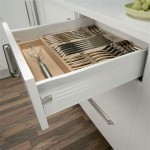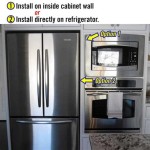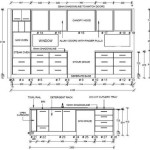How Big Should a Kitchen Trash Can Be?
Determining the appropriate size for a kitchen trash can is a crucial element in maintaining a clean, organized, and efficient kitchen environment. The ideal size is not a one-size-fits-all answer; it depends heavily on factors such as household size, cooking habits, waste disposal frequency, available space, and specific waste management practices. Selecting a trash can that is too small can lead to overflow and frequent emptying, while choosing one that is too large may result in wasted space and potentially unpleasant odors from accumulated waste. This article will explore the critical factors to consider when determining the optimal size for your kitchen trash can.
Household Size and Waste Generation
The size of the household is a primary determinant of the volume of waste generated daily. A single-person household will naturally produce significantly less waste than a family of four or more. For individuals or couples, a smaller trash can, typically ranging from 10 to 20 liters (2.5 to 5 gallons), may be sufficient. These smaller cans are generally adequate for handling daily food scraps, packaging waste, and other general household refuse. The contents will be emptied regularly before significant odors develop.
For families, the waste generation rate increases proportionally. A family of three or four will likely require a trash can in the range of 30 to 50 liters (8 to 13 gallons). These larger capacities can accommodate the increased volume of food preparation waste, discarded paper products, and general household trash that accompanies a larger household. Larger families, particularly those with young children or those who entertain frequently, might even consider a trash can in the 50 to 70 liter (13 to 18 gallon) range to prevent overflow and ensure less frequent emptying.
Furthermore, consider the frequency of grocery shopping and meal preparation. Households that cook most meals at home tend to produce more organic waste than those who frequently dine out or rely on pre-packaged meals. This factor should be carefully assessed when determining the appropriate trash can size.
Cooking Habits and Food Waste Management
Cooking habits play a significant role in the amount and type of waste generated in the kitchen. Individuals and families who engage in frequent and elaborate cooking activities will inevitably produce more food scraps, peelings, and packaging waste. Consideration should be given to how organic waste is managed. If composting is practiced, the need for a large general waste bin might be reduced, allowing for a smaller trash can to suffice. However, if composting is not an option, a larger trash can will be needed to accommodate all food-related waste.
The type of food consumed also influences the amount of waste. For example, a household that consumes a large quantity of fresh fruits and vegetables will produce more organic waste than one that primarily consumes processed foods. Similarly, households that frequently cook meat will generate bones, fat trimmings, and packaging waste that require adequate disposal space.
Consider whether food waste is proactively managed through methods like using garbage disposals, composting, or specialized food waste containers. If a garbage disposal is utilized extensively, the volume of solid food waste entering the trash can will be significantly reduced. Similarly, a well-maintained compost bin will divert a substantial amount of organic matter from the general waste stream, lessening the demand for a large trash can. Specialized food waste containers, often designed to minimize odors and deter pests, can also reduce the reliance on a large general trash can by providing a dedicated space for organic waste.
Space Considerations and Kitchen Layout
The available space in the kitchen significantly influences the size and type of trash can that can be accommodated. Before purchasing a trash can, carefully measure the available space where it will be located. Consider factors such as cabinet depth, width of walkways, and proximity to appliances. In smaller kitchens, space is often at a premium, and a larger trash can may not be feasible. In such cases, a more compact, space-saving design may be preferable.
Under-cabinet trash cans, pull-out trash can systems, and slim-profile trash cans are options that can maximize space utilization in smaller kitchens. Under-cabinet installations conceal the trash can, keeping it out of sight and freeing up floor space. Pull-out systems offer convenient access while remaining hidden when not in use. Slim-profile cans are designed to fit into narrow spaces and can be positioned against walls or between appliances.
In larger kitchens, a larger trash can might be easily accommodated without impeding workflow or aesthetics. However, even in spacious kitchens, it is important to consider the placement of the trash can in relation to key work areas, such as the sink, countertop, and stove. The trash can should be easily accessible from these areas to minimize drips and spills when discarding food waste and other refuse. Consider the flow of movement through the kitchen and ensure that the trash can does not obstruct pathways or create bottlenecks.
Beyond size, the design and style of the trash can should also complement the overall kitchen aesthetic. A wide variety of finishes, colors, and materials are available to match existing cabinetry, appliances, and décor. Stainless steel, brushed nickel, and powder-coated finishes are popular choices that offer durability and visual appeal. Consider features like fingerprint resistance and smudge-proof coatings to maintain a clean and tidy appearance.
Waste Disposal Frequency and Bag Compatibility
The frequency with which the trash is emptied influences the required trash can size. If the trash is emptied daily or every other day, a smaller can might be sufficient, even for a larger household. Frequent emptying minimizes the risk of odors and prevents the accumulation of excessive waste. However, if the trash is only emptied once a week, a larger trash can will be necessary to accommodate the week's worth of waste.
Furthermore, consider local waste management regulations and collection schedules. Some municipalities have specific requirements regarding the type and size of trash bags that can be used. Ensuring that the trash can is compatible with the standard bag sizes used in your area is crucial for ease of use and efficient waste management. A trash can that is too small may require bags to be overfilled, leading to rips, spills, and difficulties in tying and lifting the bag. A trash can that is too large may result in bags being only partially filled, wasting bag capacity and increasing the number of bags used overall.
Pay attention to the bag compatibility of the trash can you are considering. Many trash cans are designed to accommodate specific bag sizes or brands. Some models even feature internal bag holders or dispensers that simplify bag replacement and prevent the bag from slipping down into the can. Check the manufacturer's specifications and reviews to ensure that the trash can is compatible with your preferred type of trash bags. Consider using drawstring bags or bags with reinforced seams to minimize the risk of rips and spills.
Additional Features and Considerations
Beyond size and capacity, several other features can enhance the functionality and convenience of a kitchen trash can. Consider the type of lid mechanism that best suits your needs. Step-on pedals allow for hands-free operation, which is particularly useful when handling messy food waste. Motion-sensor lids automatically open and close, providing a touchless experience. Swing-top lids offer simple and convenient access, while flip-top lids provide a secure closure to contain odors.
Odor control is another important consideration. Some trash cans feature built-in odor filters, activated carbon filters, or antimicrobial coatings to minimize unpleasant smells. These features can be particularly beneficial for households that generate a lot of organic waste or those who are sensitive to odors. Consider using trash bags with odor-neutralizing properties to further control odors.
Durability and ease of cleaning are also important factors to consider. Choose a trash can made from durable materials that can withstand daily use and resist dents, scratches, and rust. Stainless steel and high-density plastics are popular choices that offer both durability and ease of cleaning. Regularly clean the trash can with soap and water to prevent the buildup of bacteria and odors. Consider using a trash can liner to further protect the can from spills and stains.
Finally, consider the environmental impact of your trash can. Opt for a trash can made from recycled materials or one that is designed to be easily recycled at the end of its lifespan. Choose durable materials that will last for many years, reducing the need for frequent replacement. And support companies that are committed to sustainable manufacturing practices.

What Size Trash Can Is Right For Your Home Kitchen Cans Unlimited

What Size Trash Can Is Right For Your Home Kitchen Cans Unlimited

Mainstays 13 Gallon Trash Can Plastic Swing Top Kitchen Garbage Black Com

Fdw 13 Gallon 50 Liter Kitchen Trash Can With Lid Stainless Steel Com

What Size Trash Can For Kitchen Is Best Plastic Place

Magshion Kitchen Trash Can 14 5 Gallon Garbage Automatic Motion Sensor Waste Bin Touchless With Lid For Home Bathroom Office Silver Com

Rev A Shelf Double Pull Out Waste Containers 2 X 27 Quart 6 75 Gallon And 35 8 Kitchensource Com

Gartio 8 Gal Stainless Steel Step Trash Can With Lid Home Kitchen Garbage Com

The Best Kitchen Trash Can For 2024 Reviews By Wirecutter

Swing Top 16 5 Gal Kitchen Trash Large Garbage Can For Indoor Outdoor Or Commercial Use Pewter Pu7mqg9n1y The Home Depot
Related Posts








